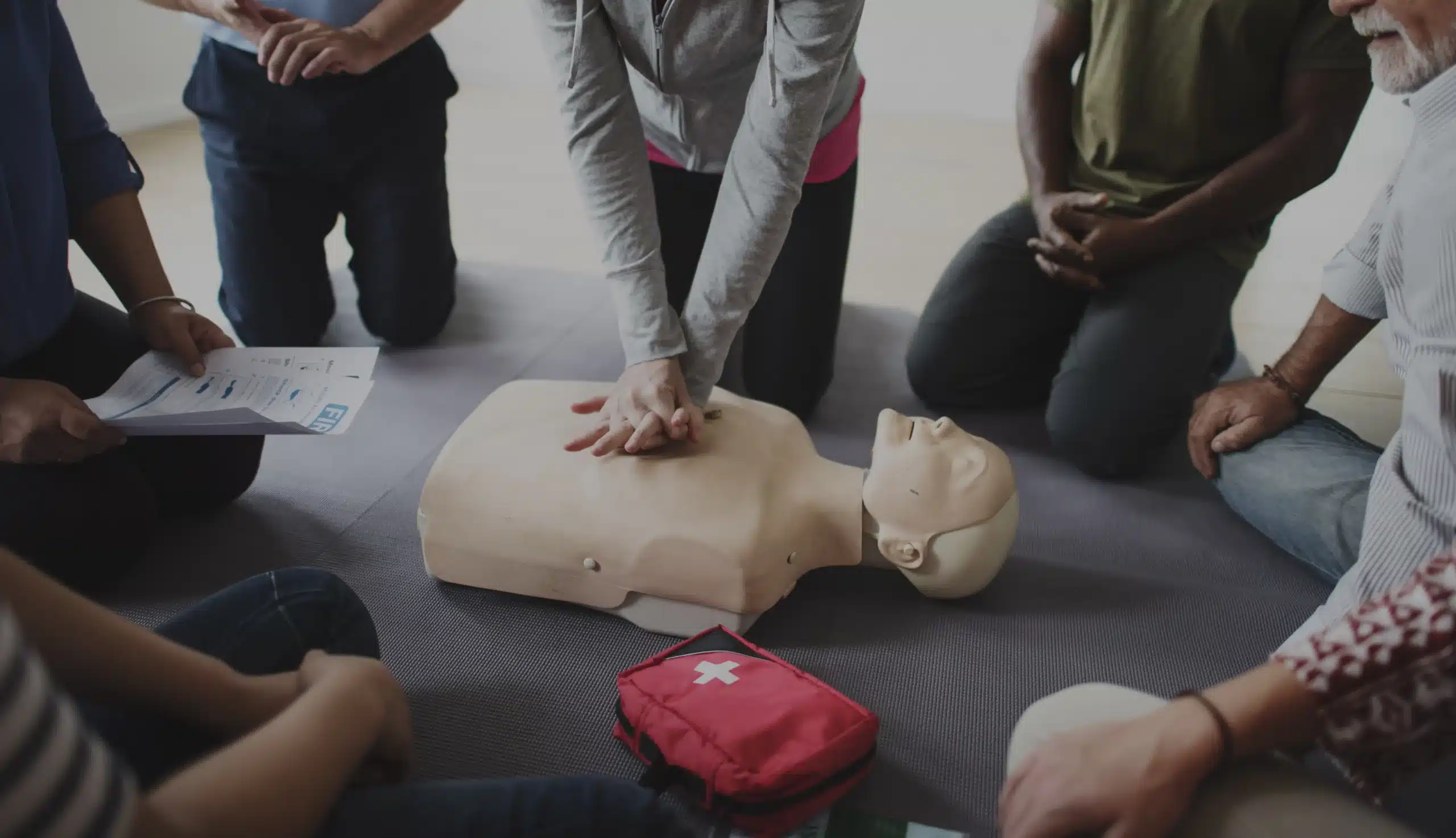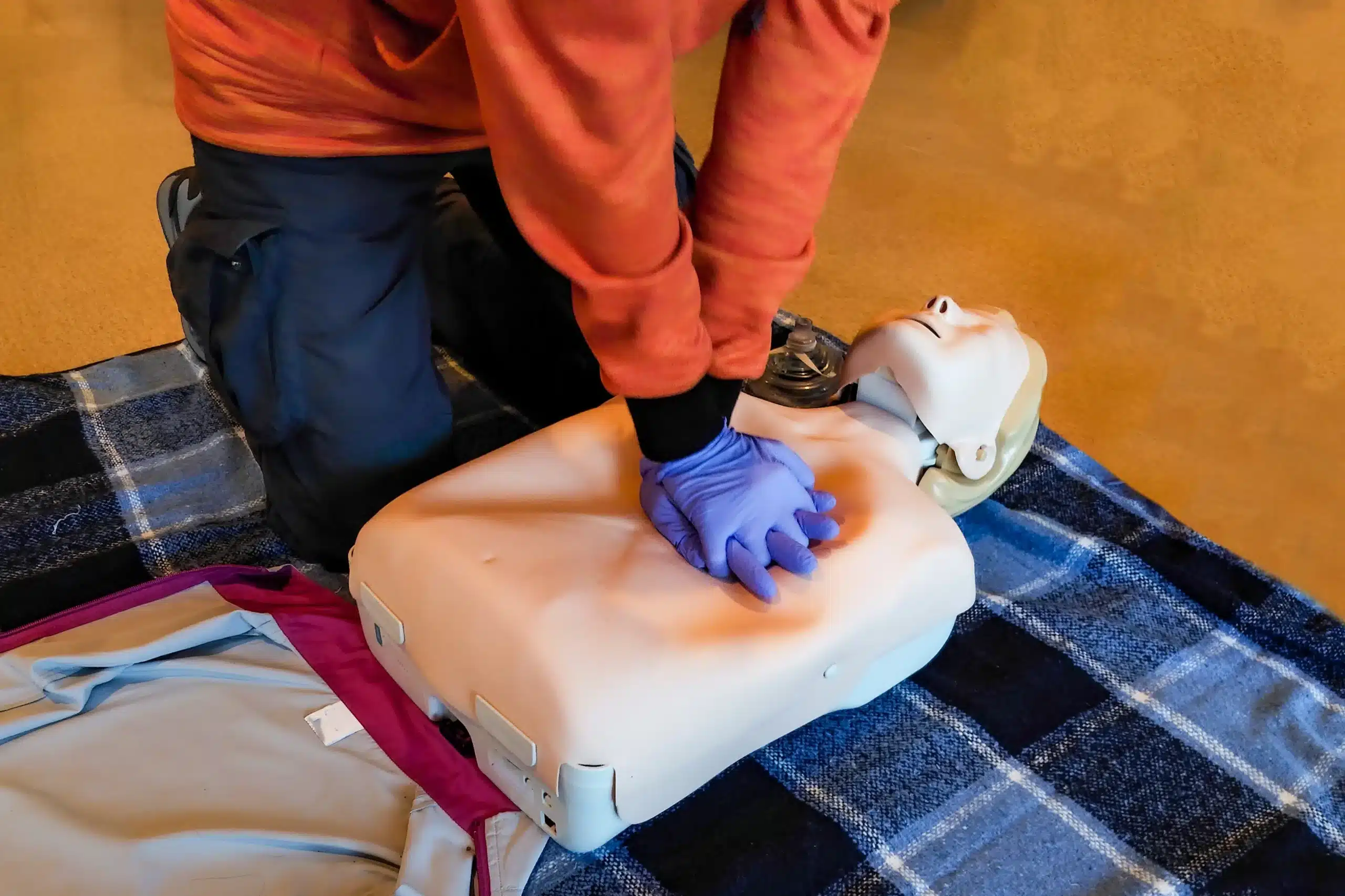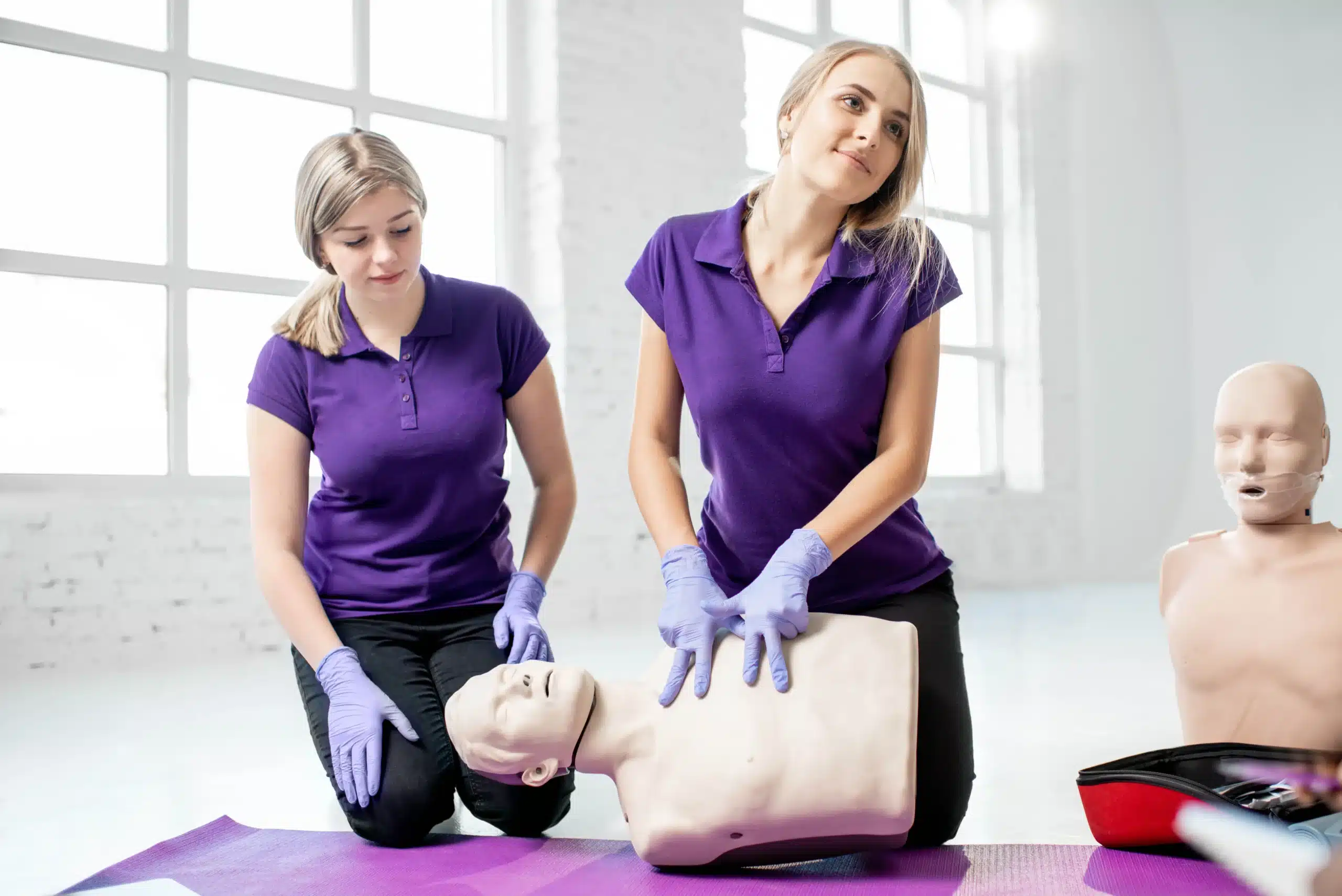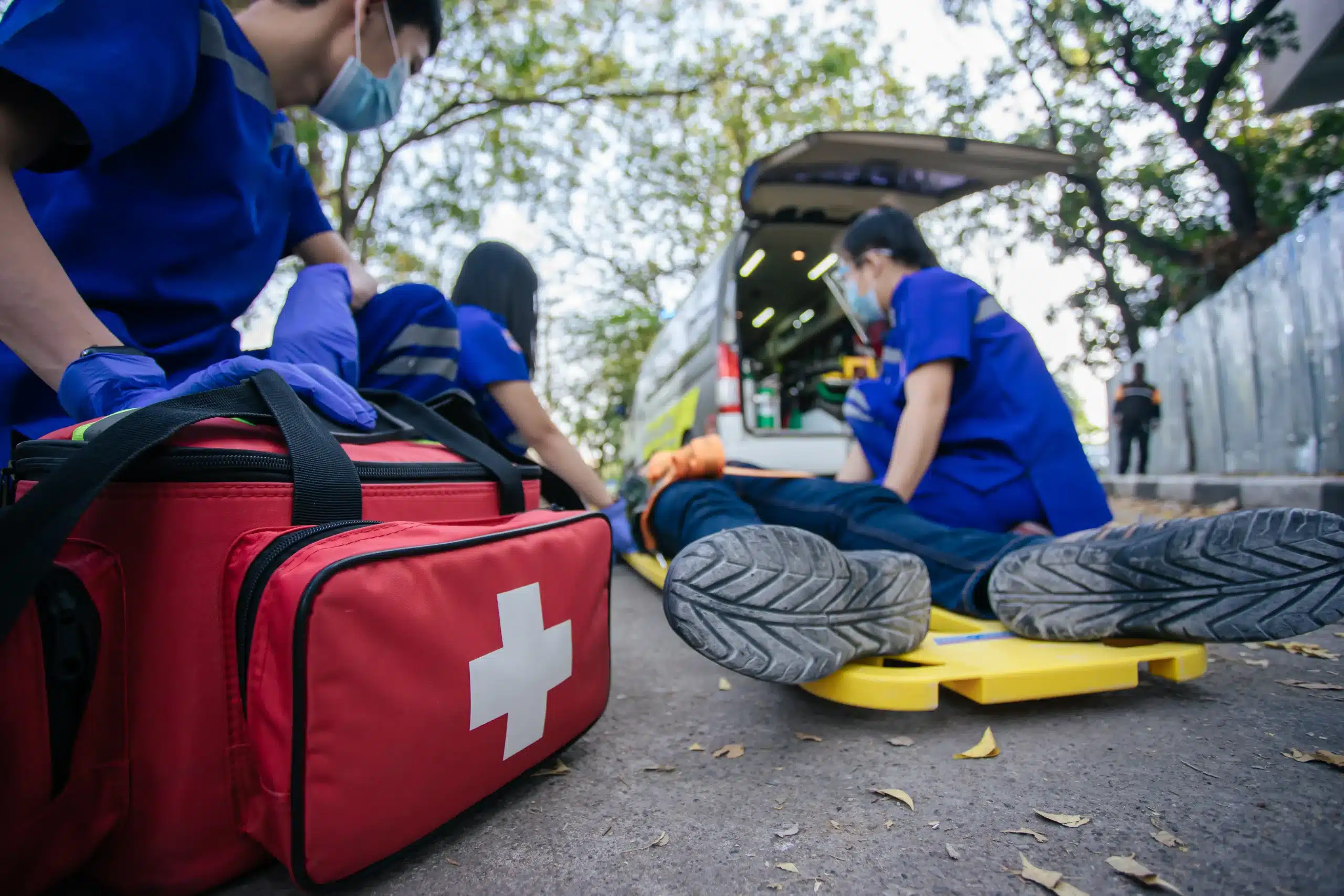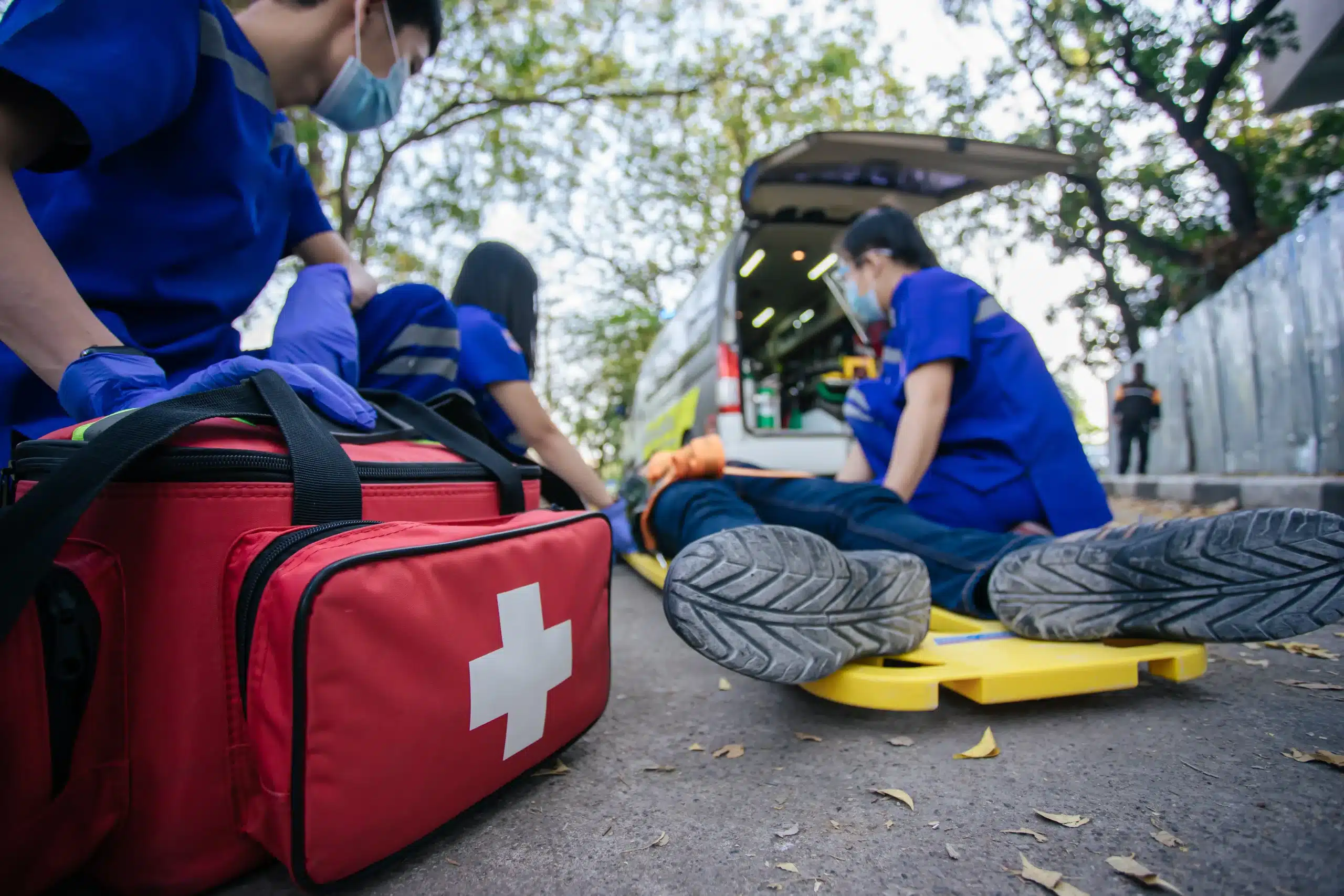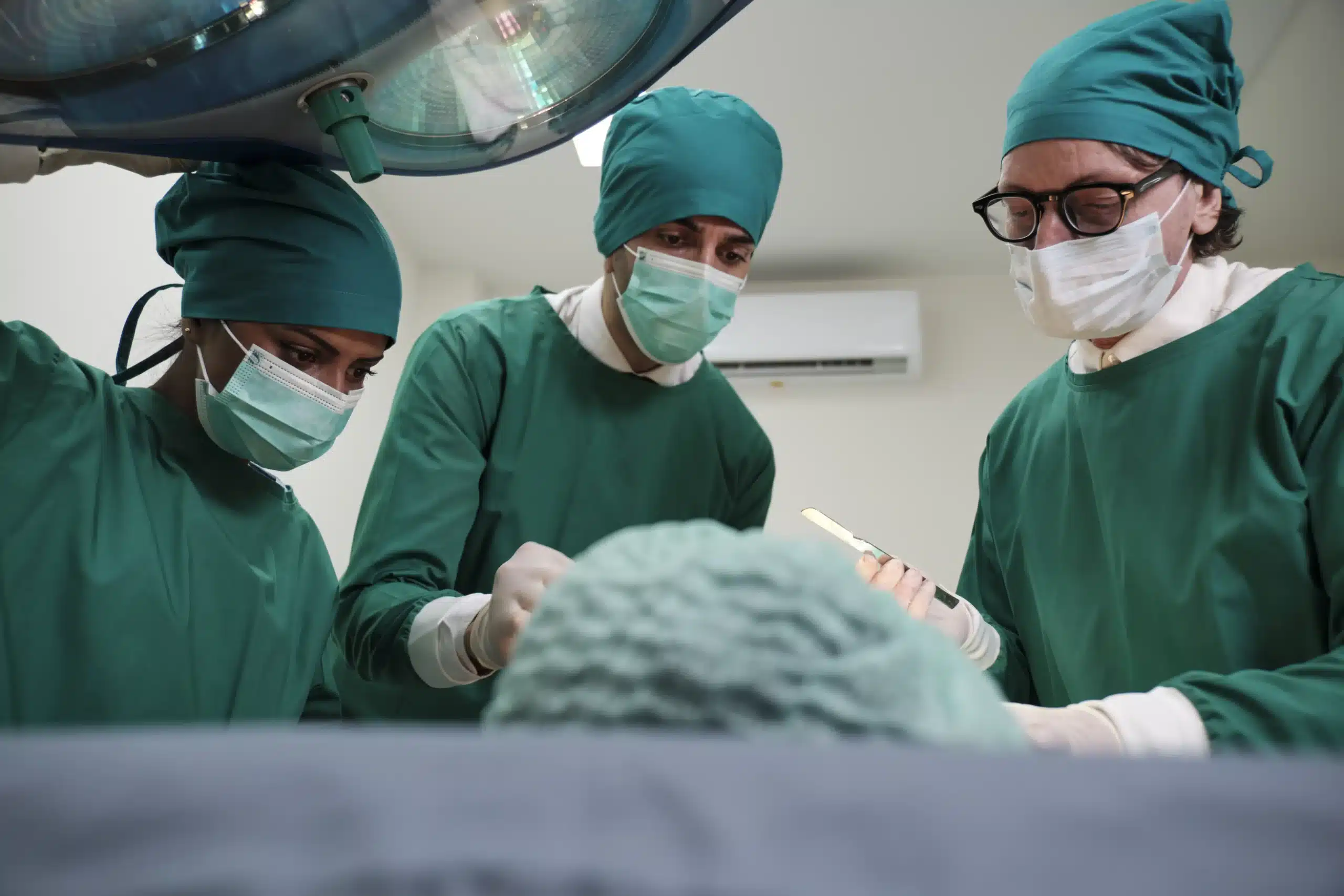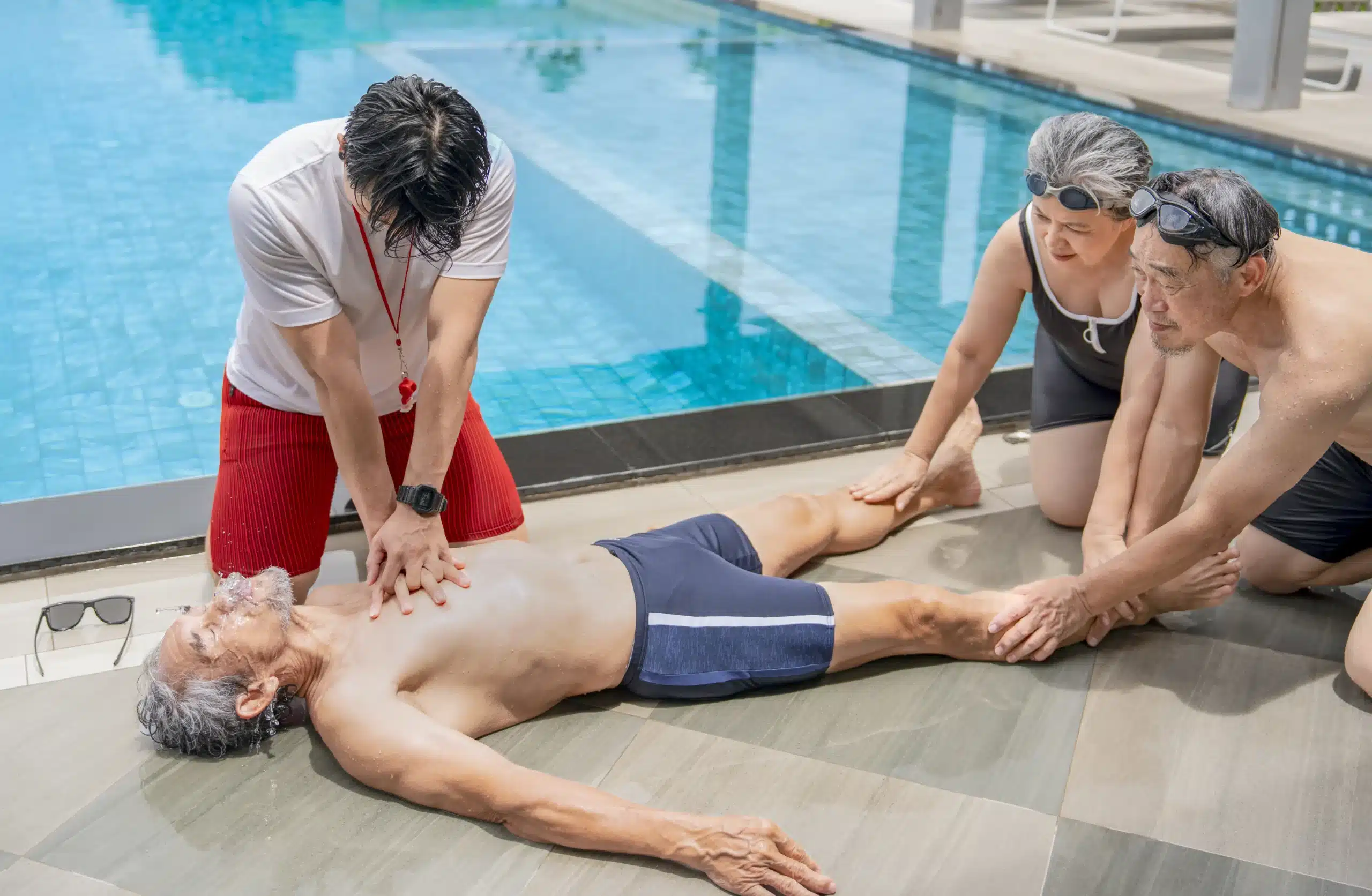Emergencies can happen anywhere, and being prepared can make a world of difference. BLS training gives you the skills and confidence to respond effectively in critical situations. This guide covers everything you need to know about BLS, from what it is and why it’s important to how to find “bls training near me” and what to expect from the training process. We’ll explore the different types of BLS courses, the costs and benefits of certification, and how these skills can be applied in real-world scenarios. Get ready to empower yourself with life-saving knowledge and become a valuable asset in your community.
Key Takeaways
- BLS skills empower you in any situation: From healthcare settings to everyday life, BLS training gives you the confidence to respond effectively to medical emergencies like heart attacks, strokes, and choking. Learn CPR, how to use an AED, and other essential skills to provide immediate care when it matters most.
- Finding the right BLS course is easy: Explore various training options, including in-person, online, and blended learning formats. Consider factors like instructor experience, course content, and schedule flexibility when choosing a provider like Santa Clara CPR Classes.
- BLS certification is an asset for life: It’s a valuable credential for healthcare professionals and a powerful skill set for anyone who wants to be prepared for emergencies. Invest in your training and renew your certification regularly to stay up-to-date and ready to help.
What is BLS Training & Why Do You Need It?
Learning BLS is more than just getting a certification—it’s about equipping yourself with the confidence to act quickly and effectively during emergencies. This section breaks down what BLS training entails, who benefits from it, and how these vital skills can be applied in real-world scenarios.
What is BLS?
BLS stands for Basic Life Support. It’s the foundation of medical care used in emergencies like heart attacks, strokes, near-drowning, or choking. BLS training teaches you essential skills, including CPR (cardiopulmonary resuscitation), recognizing someone in distress, using an AED (automated external defibrillator), and relieving choking. The curriculum covers best practices for a variety of emergencies, with a focus on techniques for healthcare settings. Early intervention can significantly improve outcomes, making BLS skills invaluable for anyone.
Who Needs BLS Certification?
BLS certification is a valuable asset for many people. It’s often a requirement for healthcare professionals like doctors, nurses, and EMTs, and highly recommended for anyone working in healthcare. Beyond the medical field, BLS training benefits teachers, coaches, childcare providers, lifeguards—anyone who wants to be prepared for an emergency. Even if it’s not required for your job, having these skills can make you an asset in your workplace and community. Consider getting certified if you’re a parent, caregiver, or simply want to handle medical emergencies. Santa Clara CPR classes offer various certifications, including BLS, ACLS, and First Aid.
How Will You Use BLS Skills?
BLS skills empower you to respond effectively to cardiac and respiratory emergencies. From performing high-quality CPR and providing ventilation support to using an AED, these skills are crucial for increasing survival chances. BLS training also emphasizes early recognition of heart attack and stroke signs, which can dramatically impact the outcome. Knowing how to assess a situation, activate emergency response, and provide initial care until professional help arrives can make all the difference. Beyond formal healthcare settings, BLS skills are invaluable in everyday life. You’ll be prepared to assist family, friends, or even strangers, providing immediate support during critical moments. The peace of mind that comes with knowing you can handle a medical emergency is invaluable.
Find BLS Training Near You
Now that you understand the importance of BLS training, let’s explore how to find a course that fits your needs and schedule. Locating a reputable provider is key to receiving high-quality instruction and a valid certification.
Top BLS Training Providers
Several organizations offer BLS certification courses. Here are a few of the most recognized:
American Heart Association (AHA)
The American Heart Association is a leading authority in CPR and emergency cardiovascular care. Their BLS courses are widely accepted and respected within the healthcare community. AHA courses cover essential life-saving techniques, including CPR, AED use, and relief of choking.
American Red Cross
The American Red Cross also provides BLS certification courses for healthcare professionals and other individuals seeking this essential training. Their program focuses on equipping participants with the skills to respond to life-threatening situations.
Santa Clara CPR Classes
Santa Clara CPR Classes offers a range of American Heart Association-certified courses, including BLS. They prioritize convenient scheduling, often with daily availability, and offer a low price guarantee. Serving Santa Clara, Milpitas, and San Jose, their focus is on providing accessible, high-quality training.
Local Hospitals & Medical Centers
Many local hospitals and medical centers offer BLS training programs. These courses are often part of staff development but may also be open to the public. Check with hospitals and medical centers in your area for available BLS training options. For example, Bay Area CPR offers CPR and BLS training in Santa Clara.
Choose the Right Training Provider
When selecting a BLS training provider, consider these factors:
- Course Content: Ensure the course covers the latest AHA or Red Cross guidelines for BLS.
- Instructor Qualifications: Verify that instructors are certified and experienced in teaching BLS.
- Schedule Flexibility: Choose a provider that offers courses at times and locations that work for you.
- Reputation and Reviews: Look for providers with positive reviews and a strong reputation for quality training. Word-of-mouth referrals can be valuable.
- Cost: Compare pricing from different providers, but remember that quality instruction is essential.
Tips for Local Searches
Finding a BLS class near you is easier than ever. Use online search engines like Google, Bing, or Yelp to search for “BLS classes near me” or “BLS certification [your city/region]”. Check local community centers, and dedicated training providers like Santa Clara CPR Classes. Don’t hesitate to contact us if you have questions or need help finding a course.
BLS Course Options: Format, Duration & Curriculum
Choosing the right BLS course means understanding the different formats, what’s included, and how you get certified. Let’s break down these elements to help you make a smart decision.
Training Formats: In-Person, Online, Blended Learning
BLS courses come in three main formats: in-person, online, and blended learning. In-person training gives you face-to-face instruction and hands-on practice in a traditional classroom. Online courses offer flexibility for busy schedules, letting you complete the coursework at your own speed. Blended learning combines online learning with an in-person skills session. HeartCode BLS is a popular blended learning option, allowing you to study the material online and then show your skills in person.
Course Duration & Curriculum Overview
BLS courses are designed to be thorough but manageable. Most courses take a day to complete, though the exact timing depends on the format and provider. The curriculum usually covers core life support skills like CPR for adults, children, and infants, using an AED, and helping someone who is choking. You’ll also learn about teamwork, communication, and the importance of high-quality CPR. Finding a BLS class that fits your schedule is easy, with providers like Santa Clara CPR Classes offering flexible options.
Hands-On Practice & Skill Assessment
Hands-on practice is key to BLS training. You’ll practice your skills on mannequins, working through real-life scenarios. This builds confidence and prepares you to act in an emergency. Instructors give feedback and guidance to help you master the techniques. Santa Clara CPR Classes provides all the materials you’ll need. The skills assessment usually involves showing your CPR, AED, and other essential skills.
Certification Process & Validity
After you finish the course and skills assessment, you’ll receive your BLS certification card. This certification is usually good for two years, then you’ll need a refresher course. Some providers offer same-day certification, so you can leave with your credentials right away. The American Heart Association BLS course teaches essential techniques and best practices for healthcare settings, making sure you’re ready for anything.
BLS Certification: Cost & Value
Getting BLS certified is an investment in your skills and your future. Let’s break down the costs, explore ways to save, and look at how BLS training adds value to your life.
Average BLS Course Costs
BLS course fees vary depending on the training provider, location, and course format. Expect to pay anywhere from $65 to $95 for initial BLS certification and slightly less for recertification. Some providers offer a low price guarantee, ensuring you get the best value for your training. It’s always a good idea to compare prices from different providers before committing to a class. Check with Santa Clara CPR Classes for their latest pricing and guarantee.
Discounts & Group Rates
If you’re training with a group, you might be able to get a discount. Many organizations offer reduced rates for group CPR training, making it more affordable to train as a team. This can be a great option for workplaces, community groups, or even a group of friends. Check with your local training centers to see what group discounts are available. Santa Clara CPR Classes offers discounts for group training. You can also check with Campbell CPR Classes for discounts in Santa Clara County.
Career Advantages of BLS Certification
A BLS certification is a valuable asset for anyone in the healthcare field. The Red Cross positions BLS training as essential for patient care and career advancement. It demonstrates your commitment to providing high-quality care and can open doors to new opportunities. Plus, maintaining your certification keeps your skills sharp and ensures you’re prepared for any emergency. Remember, BLS certifications are typically valid for two years, so plan for renewal courses to stay current. Check out the Red Cross for more information on BLS certification and renewal.
BLS Skills in Everyday Life
While BLS certification is often a job requirement, the skills you learn extend far beyond the workplace. Knowing how to perform CPR and provide basic life support can make a real difference in everyday emergencies. From a choking incident at a restaurant to a sudden cardiac arrest at a sporting event, your BLS training can equip you to respond effectively and potentially save a life. Santa Clara CPR Classes focuses on practical skills and teamwork, preparing you to handle real-life situations with confidence. It’s about more than just a certification—it’s about empowering yourself to help others in need.
Prepare for Your BLS Training
So, you’re ready to sign up for BLS training? Great! A little prep work goes a long way. This section debunks common myths, offers practical tips, and sets you up for success.
BLS Training Myths
One common misconception is that the online portion of some BLS courses is difficult. The truth is, the online part focuses more on essential BLS knowledge. Some people find the material straightforward, while others might need more time. Like anything else, it depends on your learning style and comfort level with technology. Don’t let tech worries hold you back! Read about other people’s experiences with online BLS training.
Prepare for Success
Before your BLS class, familiarize yourself with the basics. Even a quick review of some BLS study materials or a practice test can boost your confidence. Think of it like brushing up on your driving knowledge before a road test—it helps calm the nerves and reinforces important concepts. At Santa Clara CPR Classes, we offer resources to help you prepare. Contact us to learn more.
Tips for Completion
Start by reviewing key BLS terms. Knowing the terminology makes the training much easier to follow. Solid training builds confidence for your certification exam. These five tips will help you prepare for your BLS certification.
Renewal & Continuing Education
Remember, your BLS certification is typically valid for two years. Plan to take a renewal course before it expires to keep your skills sharp and your certification current. Many providers, including Santa Clara CPR Classes, offer refresher courses, making it easy to stay up-to-date. Check our website for upcoming renewal courses.
Related Articles
- BLS Certification in San Jose: Your Complete Guide – Santa Clara CPR Classes
- BLS Certification in Santa Clara: Your Complete Guide – Santa Clara CPR Classes
- BLS Courses in Santa Clara: Your Complete Guide – Santa Clara CPR Classes
- BLS Classes in Santa Clara: The Complete Guide – Santa Clara CPR Classes
Frequently Asked Questions
What’s the difference between CPR and BLS?
CPR, or cardiopulmonary resuscitation, is one of the core skills taught within a BLS course. BLS (Basic Life Support) encompasses a broader range of skills, including CPR, AED use, and relieving choking, providing a more comprehensive approach to emergency care. Think of CPR as a vital tool within the larger BLS toolkit.
How long does it take to get BLS certified?
BLS courses are designed to be efficient and comprehensive, typically completed within a day. The exact duration can vary slightly based on the format you choose (in-person, blended, or online) and the specific training provider.
Is online BLS training as good as in-person training?
Online BLS training offers a convenient way to learn the cognitive material at your own pace. However, it’s typically combined with an in-person skills session where you practice and demonstrate your skills on mannequins with certified instructors. This blended approach ensures you receive both the knowledge and practical experience necessary for effective BLS.
How much does a BLS course cost?
The cost of a BLS course can range from $65 to $95, depending on the training provider, location, and course format. Look for providers who offer a low-price guarantee or group discounts to help make training more affordable.
How often do I need to renew my BLS certification?
BLS certifications are typically valid for two years. To maintain your credentials and keep your skills current, you’ll need to take a recertification course before your current certification expires. Many providers offer refresher courses that cover the latest guidelines and best practices.
